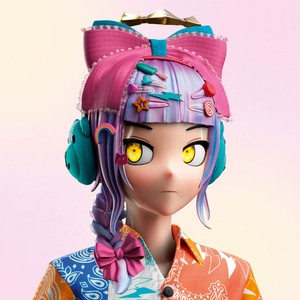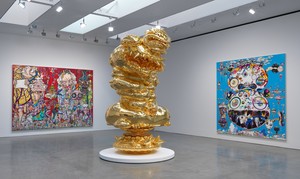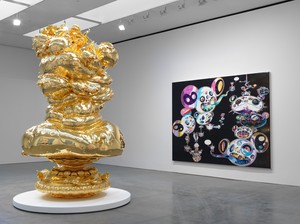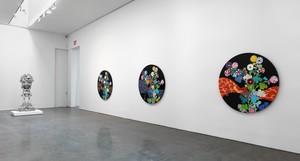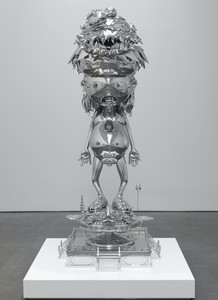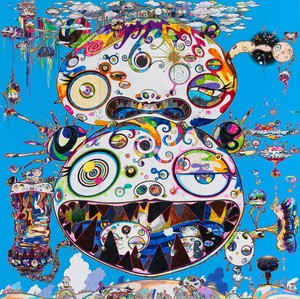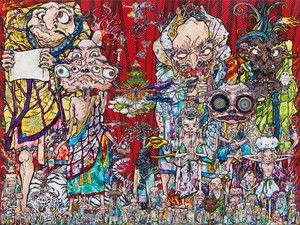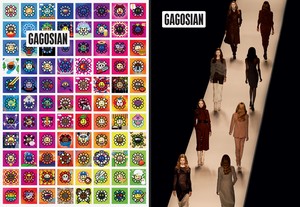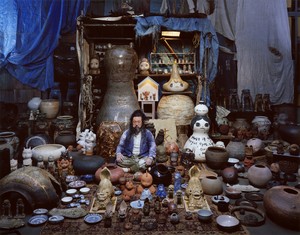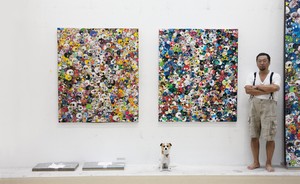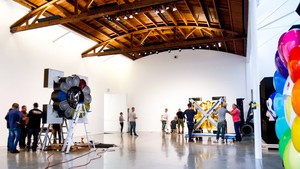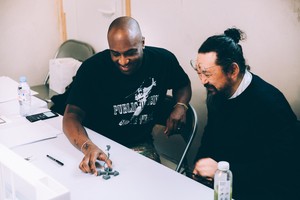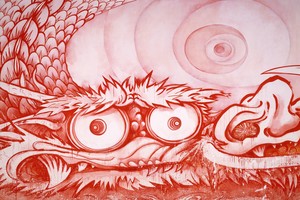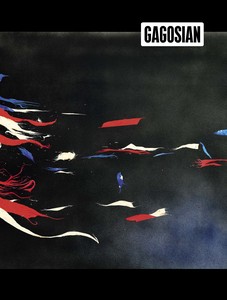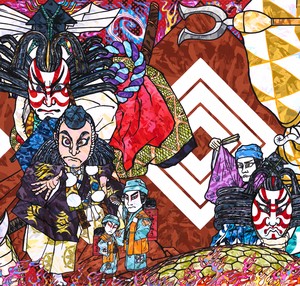To me, religions are a narrative. . . . Natural catastrophes, earthquakes, are things caused by nature. Such chaos is natural, but we have to make sense of it somehow, and so we had to invent these stories. That is what I wanted to paint.
—Takashi Murakami
Gagosian New York is pleased to announce In the Land of the Dead, Stepping on the Tail of a Rainbow, a major exhibition of new paintings and sculptures by Takashi Murakami.
A lightning rod of cultural dichotomies (high/low, ancient/modern, oriental/occidental), Murakami believes the artist to be one who perceives and limns the borders between worlds. Combining classical techniques with the latest technologies, he moves freely within an ever-expanding field of aesthetic issues and cultural inspirations. Parallel to the dystopian themes that pervade his work, he recollects and revitalizes traditional narratives of transcendence and enlightenment, often involving outsider-savants. Mining religious and secular subjects favored by the so-called Japanese “eccentrics”—nonconformist artists of the Early Modern era commonly considered to be counterparts of the Western Romantic tradition—Murakami situates himself within their legacy of bold and lively individualism in a manner that is entirely his own and of his time.
Since the devastating Great Tōhoku Earthquake of 2011, Murakami has explored Japanese art produced in response to historic natural disasters. For example, in the aftermath of the Great Asei Edo Earthquake of 1855, painters such as Kano Kazunobu portrayed the five hundred arhats (or rakan), the spiritual protectors of the Buddha’s teachings, as stewards of enlightenment in dire times. While Kazunobu employed diverse Eastern and Western techniques in his vast scroll paintings, Murakami has created an immersive installation, entered through a 56-ton replica of a sanmon (sacred gate), of eclectic arhats; deliquescing clones of his fictional creature Mr. DOB; and karajishi, the mythic lions that guard Japanese Buddhist temples. Here is a contemporary belief system, constructed in the wake of disaster, that merges earlier faiths, myths, and images into a syncretic spirituality of the artist’s imagination. In totemic sculptures representing demons, religious sites, and self-portraits, and in paintings that conflate classical Japanese techniques with Abstract Expressionist tropes, science-fiction, manga, and Buddhist and Shinto imagery, Murakami investigates the role of faith amid the inexorable transience and trauma of existence.
